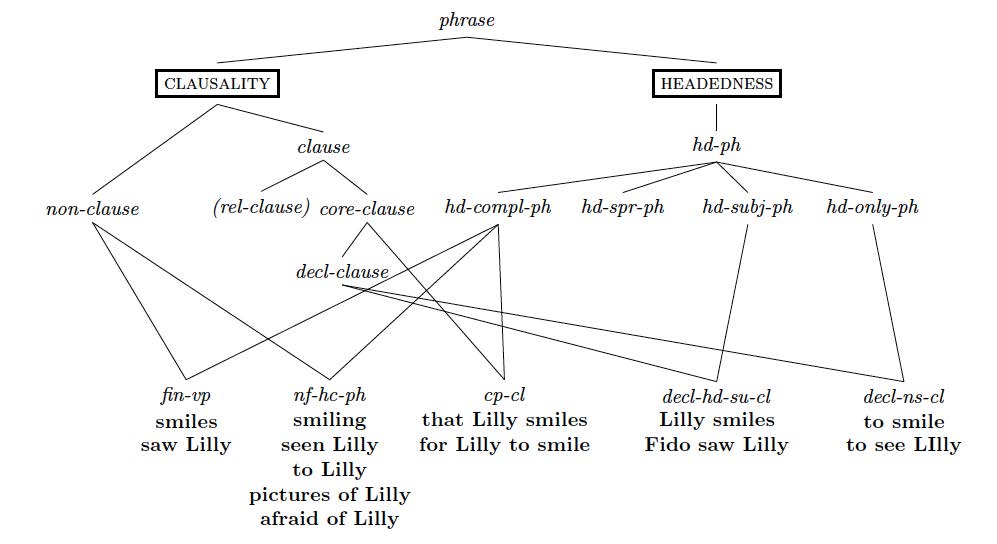Constraint-based Syntax 2: Week 3
The Phrase Hierarchy
Constraints on the Phrasal Types
Illustration of Constraint Inheritance
Since the type type{fin-vp} has several phrasal supertypes, a feature structure of that type must satisfy the following constraint:
Exercises
1. Using the handout File:Phrasal Types.pdf, compute by hand the overall constraints that the maximal subtypes of type phrase have to satisfy (leave out the type decl-ns-cl). In other words: write into one feature structure all the constraints of each maximal subtype and its supertypes in the type hierarchy.
2. By parsing the following expressions in the Schematic Grammar, you can test the constraints associated with the type phrase and its subtypes, in particular the 4 maximal types whose overall constraints you were supposed to compute by hand in Exercise 1:
a. word subj_seeker
b. word spr_seeker
c. comp_seeker word
3. By parsing the following expressions in our Regular Online Grammar, you will see which information authentic lexical entries contribute to a phrase:
a. Real "subject seekers":
- dances
- likes Lilly
b. Real "specifier seekers":
- cat
- picture of Lilly
c. Real "complement seekers":
- likes Lilly
- puts the books on the shelf
After you have tried the examples above, think up 3 more examples for each of the 3 types and try them out in the regular online grammar.
Navigation:











